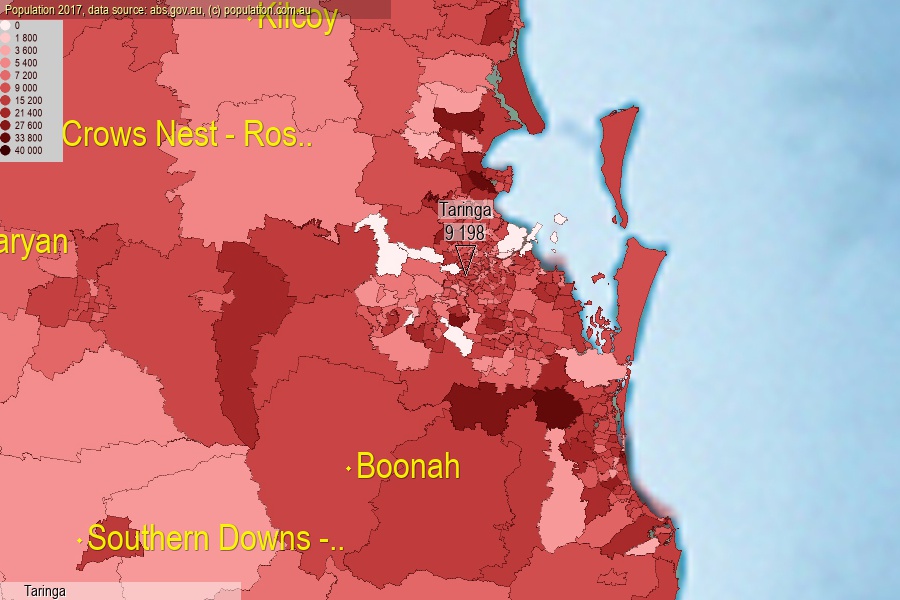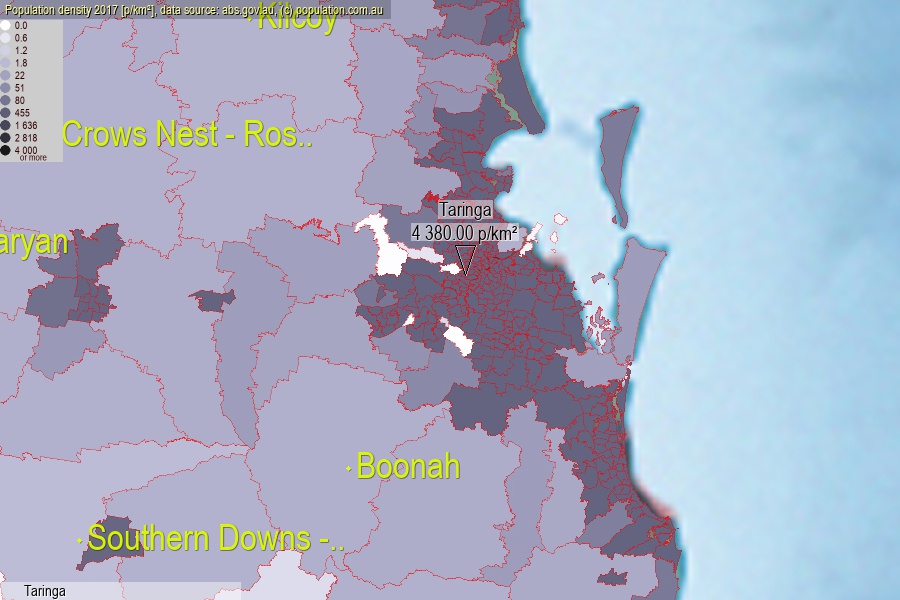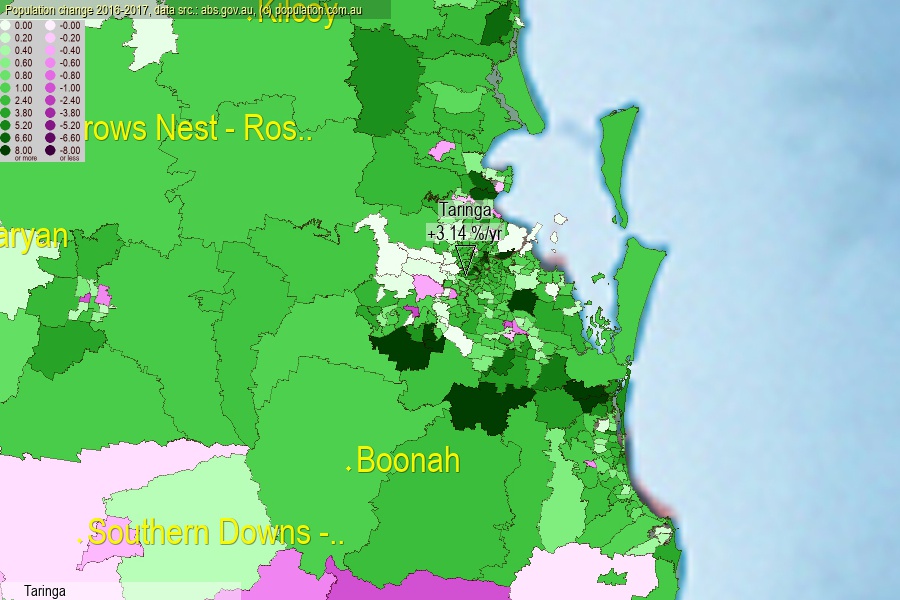 population.com.au
population.com.auLast official estimated population of Taringa (as Statistical Area Level 2) was 9 198 people (on 2017-06-30)[2]. This was 0.04% of total Australian population and 0.184% of QLD population. Area of Taringa is 2.10 km², in this year population density was 4 380.00 p/km² . If population growth rate would be same as in period 2016-2017 (+3.14%/yr), Taringa population in 2025 would be 11 779. [0]



Click to enlarge. Taringa is located in the center of the images.
Population [people], population density [p./km²] and population change [%/year] [2]
View borders » (new window) [4]
[1991-1992] +2.45 %/Yr.
[1992-1993] +0.32 %/Yr.
[1993-1994] +1.63 %/Yr.
[1994-1995] +2.21 %/Yr.
[1995-1996] +2.23 %/Yr.
[1996-1997] +0.38 %/Yr.
[1997-1998] +2.11 %/Yr.
[1998-1999] +0.89 %/Yr.
[1999-2000] +0.95 %/Yr.
[2000-2001] +1.23 %/Yr.
[2001-2002] +3.16 %/Yr.
[2002-2003] +3.74 %/Yr.
[2003-2004] +3.69 %/Yr.
[2004-2005] +2.22 %/Yr.
[2005-2006] +2.82 %/Yr.
[2006-2007] +1.74 %/Yr.
[2007-2008] +1.59 %/Yr.
[2008-2009] +1.40 %/Yr.
[2009-2010] +1.24 %/Yr.
[2010-2011] +0.58 %/Yr.
[2011-2012] +0.80 %/Yr.
[2012-2013] +1.54 %/Yr.
[2013-2014] +1.12 %/Yr.
[2014-2015] +0.74 %/Yr.
[2015-2016] +1.94 %/Yr.
[2016-2017] +3.14 %/Yr.
[0] Calculated with linear interpolation from officially estimated population
[1] Read more about SA2 and Australian Statistical Geography Standard (ASGS) on abs.gov.au
[2] Population data from Australian Bureau of Statistics (Population and density: 2017; change: 2016-2017)
[3] Digital Boundaries: Australian Statistical Geography Standard (ASGS) 2016.
[4] Border coordinates are simplifyed using Ramer-Douglas-Peucker algorithm.